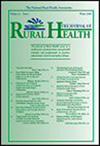Rural–urban movement and stability in relation to minority stress-related factors, tobacco norms, and tobacco use among a sample of US sexual minority-identifying young adults
Abstract
Purpose
Sexual minority young adults (SMYAs) residing in rural (vs. urban) areas report higher tobacco use rates. Less work has assessed associations of rural–urban residential movement/stability with SMYAs’ tobacco use and factors driving these associations.
Methods
We analyzed 2023 survey data from 1082 US SMYAs (aged 18–34). Multivariable regressions controlling for sociodemographics examined associations of: (1) rural–urban movement/stability (urban stability, rural–urban movement, rural stability [REF]) with minority stress-related factors (mental health symptoms, internalized stigma), perceived tobacco norms (peer tobacco use, social acceptability of tobacco use), and tobacco use (past-month cigarette, e-cigarette, any tobacco use, number of products used); and (2) minority stress-related factors and tobacco norms with tobacco use.
Findings
Relative to SMYAs reporting rural stability, those reporting rural–urban movement and urban stability displayed lower odds of any tobacco use and mental health symptoms, and less peer tobacco use. Those reporting rural–urban movement also reported lower odds of cigarette use and less internalized stigma. Peer tobacco use was associated with higher odds of cigarette and any tobacco use; reporting ≥ moderate mental health symptoms and greater internalized stigma and social acceptability was associated with higher odds of cigarette use.
Conclusions
These novel findings provide preliminary evidence that, relative to their SM peers who reside in rural areas, SMYAs who move from rural to urban areas may experience less minority stress-related factors and lower tobacco use norms, which may reduce risk for cigarette and other tobacco use. Findings highlight the need for public health messaging interventions targeting SMYAs in rural communities.

 求助内容:
求助内容: 应助结果提醒方式:
应助结果提醒方式:


